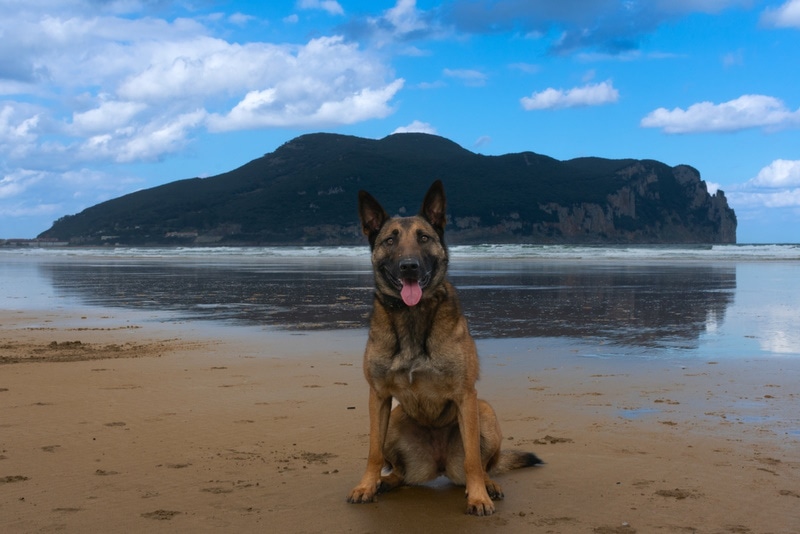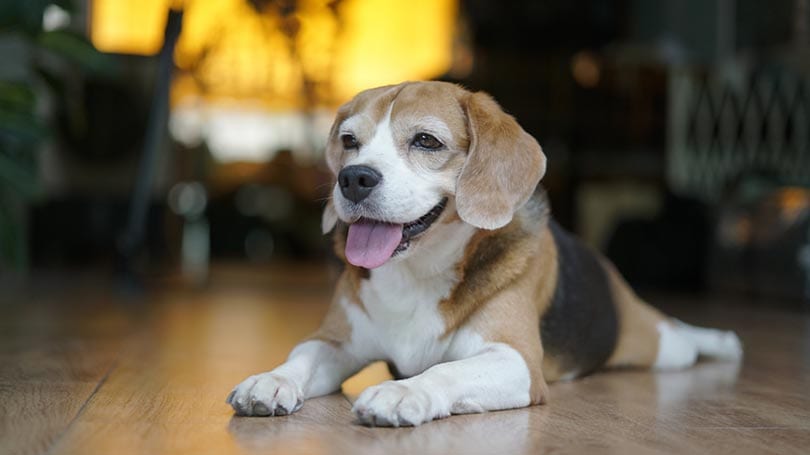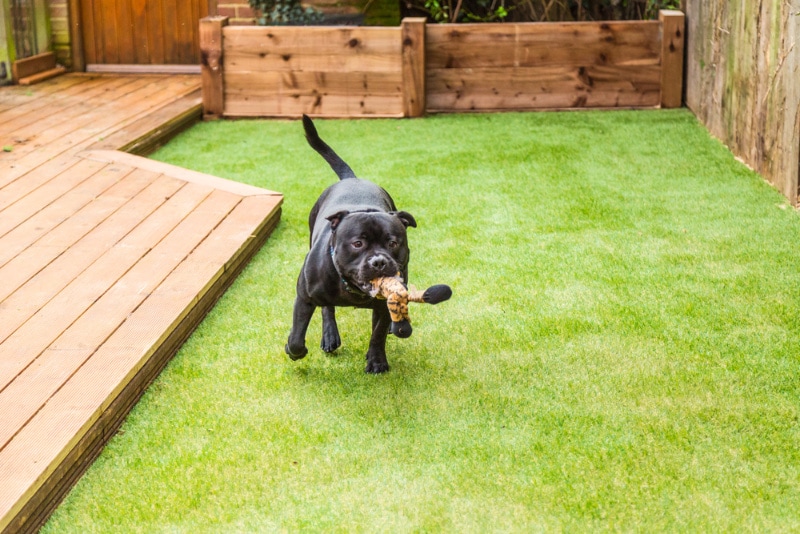How to Train a Whippet: 7 Helpful Tips

Updated on
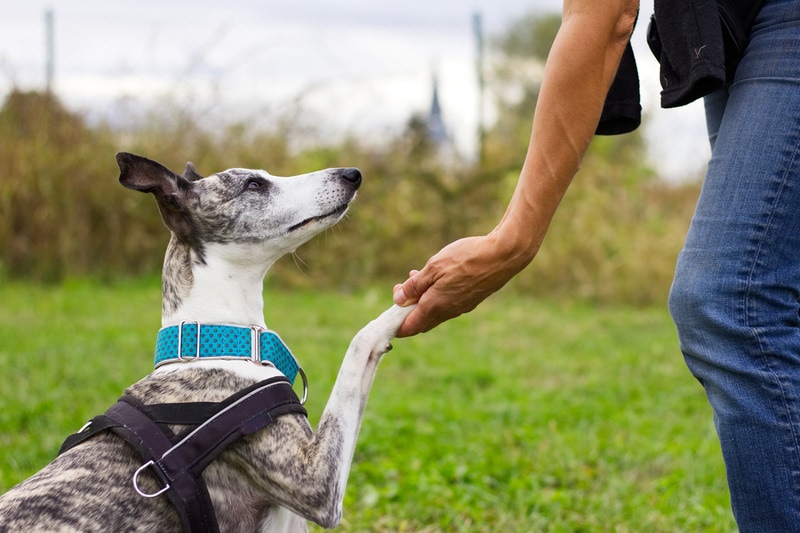
Training a Whippet is an exciting yet challenging journey. These beautiful sighthounds are known for their speed, agility, and independent minds. But with their sensitive and loving nature, Whippets can be taught to be obedient and well-behaved family pets. Here are seven expert tips on how to train your Whippet effectively.
The 7 Tips on How to Train a Whippet
1. Embrace the Power of Calmness
Like many other dogs, Whippets respond best to a calm and gentle approach. They are highly sensitive creatures and can become easily startled or uncomfortable with harsh tones and actions. Maintaining a calm demeanor, even when they test your patience, is key to their obedience training.
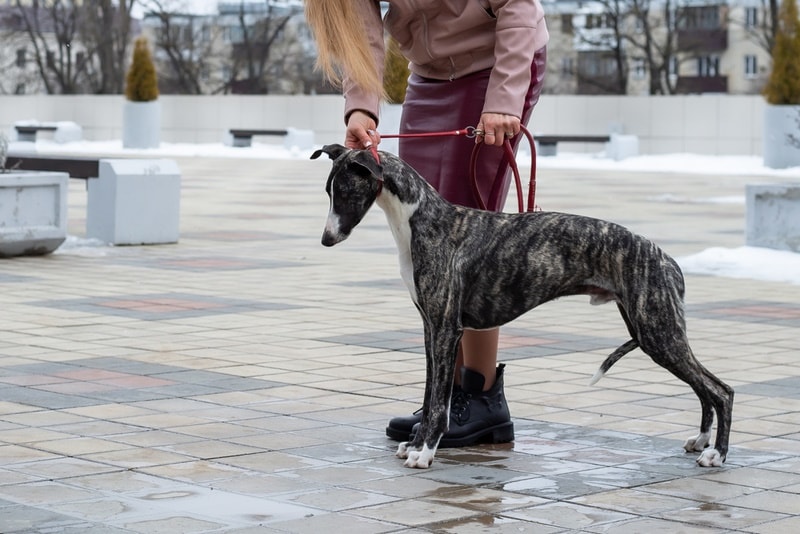
How to Practice Calmness
Start by controlling your emotions during the training process. Use these instances as teaching moments instead of reacting negatively to your Whippet’s misbehavior. Using positive reinforcement techniques such as verbal praise or a pat on the head when they perform correctly can help to instill good behavior.
2. Treats: A Whippet’s Best Friend
Whippets can be easily distracted by their environment. The good news is that these dogs are highly food motivated. Utilizing treats in their training sessions can help to keep them focused and reinforce positive behaviors.
Making the Most of Treats
Always keep a supply of small, tasty treats on hand during training sessions. Use them as a reward for good behavior, gradually phasing them out as your Whippet becomes more accustomed to the commands.
3. Know Your Whippet’s Triggers
Whippets are sighthounds, which means their sharp eyes are naturally drawn to movements and distractions in their environment. Everything from other pets to cars and squirrels can make it difficult for your Whippet to stay focused. Fortunately, there are ways to combat this.
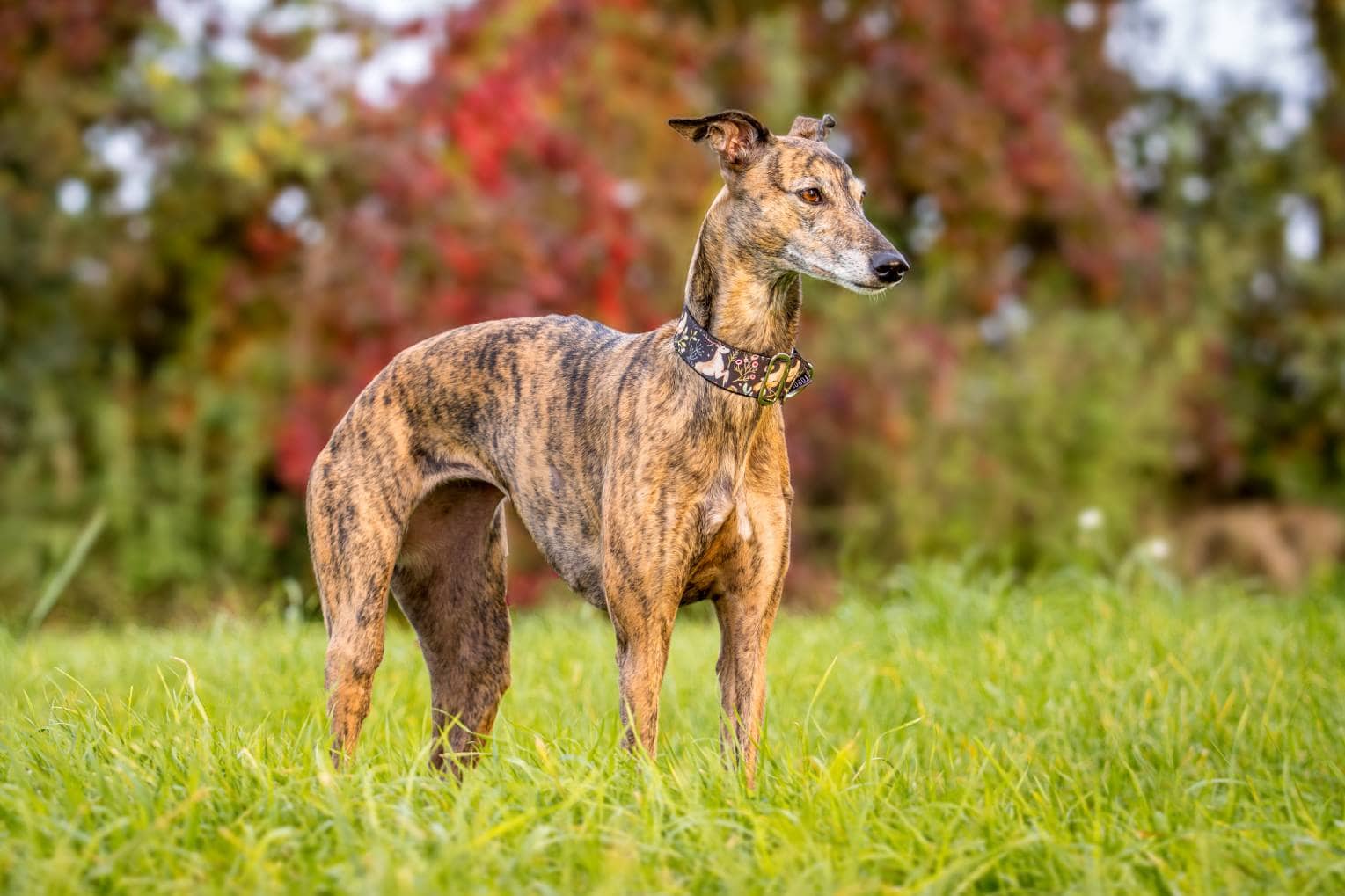
Working With Whippet Triggers
Start with the basic step of choosing a quiet, distraction-free location for the initial training sessions. As you introduce commands and your Whippet becomes more proficient in obeying them, you can slowly start adding mild distractions.
This gradual exposure will help your Whippet to learn to focus on your commands, even in a stimulating environment. Remember, the goal is to teach your Whippet to prioritize your commands over their instinctual urges.
4. Patience Is a Key Virtue
Whippets are intelligent creatures, but their independent nature can sometimes make them appear aloof or indifferent to commands. They might take a little longer to respond, but with persistence and patience, they will eventually learn and obey the commands.
Embracing Patience
When training a Whippet, it’s important to give them ample time to understand and respond to each new command. Progress might seem slow at times, but don’t rush it. With patient, consistent training, your Whippet will gradually learn to obey your commands with precision and speed.
5. Timing Is Everything
Choosing the right time for training sessions is crucial. These energetic hounds have periods of high activity and also moments of calm, so timing your training sessions to align with their natural rhythms can improve their focus and responsiveness.
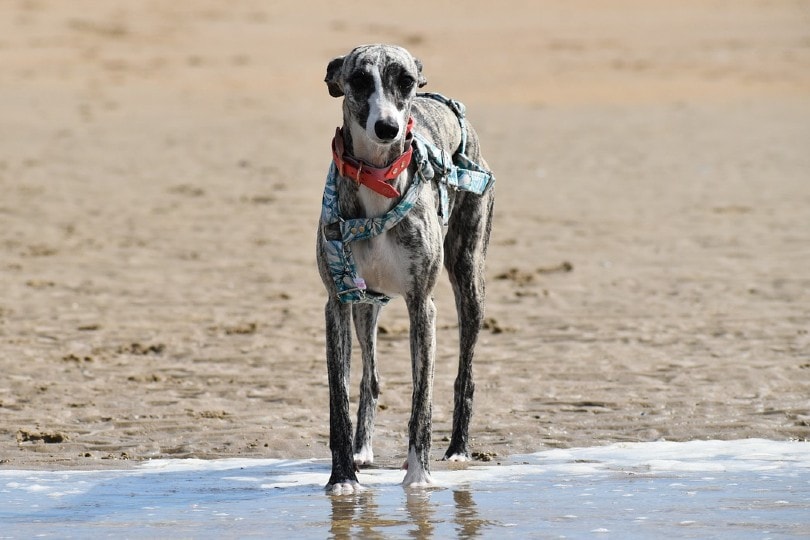
Timing Your Training Sessions
Ideally, try to schedule training sessions during your Whippet’s calm moments, such as early mornings or late evenings, after they’ve had their bout of zoomies and expended some of their energy. This timing allows you to take advantage of their naturally quieter state, which can make the training sessions more productive and enjoyable for both of you.
6. Consider Dog Training Classes
While at-home training is a great start, dog training classes provide a structured learning environment that benefits both you and your Whippet. These classes offer firsthand guidance from experts and exposure to a variety of different dogs and scenarios, which is invaluable in honing your Whippet’s social skills.
Maximizing Dog Training Classes
To make the most out of these classes, be sure to actively participate and ask questions. The insights you gain here should not stay in class; apply them at home to reinforce your Whippet’s training. Practice the commands you learn, observe your Whippet’s behavior, and adjust your training techniques accordingly.
7. Consistency, Consistency, Consistency
It’s the cornerstone of successful dog training. Whippets, like most dogs, thrive on predictability and routine. They are observant creatures and can easily pick up on inconsistencies in your commands or behavior, which can confuse them and slow their learning process.
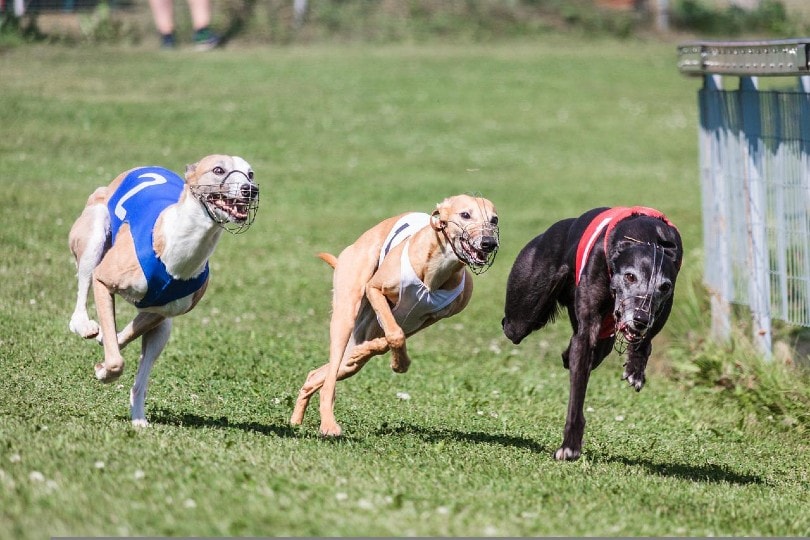
Practicing Consistency
Use the same commands and gestures each time for a particular action. For example, if you use the command “sit” coupled with a specific hand gesture, be sure to use this exact combination every time you want your Whippet to sit.
Similarly, be consistent with your rewards and consequences. If your Whippet is praised for a specific behavior one day and reprimanded for the same behavior the next, it will confuse them. Consistency helps your Whippet understand what behavior is acceptable and what isn’t, thereby promoting faster learning.
Keeping Your Whippet Healthy & Happy
Ensuring your Whippet is healthy and happy goes hand-in-hand with successful training. A contented, well-cared-for dog is likely to be more receptive to learning. Here are some expert tips to keep your Whippet thriving.
Provide Balanced Nutrition
Whippets require a balanced diet to maintain their sleek physique and energy levels. Make sure their diet consists of high-quality dog food with a good balance of protein, carbohydrates, and fats. Don’t forget to include fiber for good digestive health and provide plenty of fresh water daily.
Regular Exercise Is Essential
Being a breed known for their speed and agility, Whippets need plenty of physical exercise. Regular walks, runs, and play sessions will help to keep them fit and content. Mental stimulation is just as important, so include toys and games that challenge them mentally.
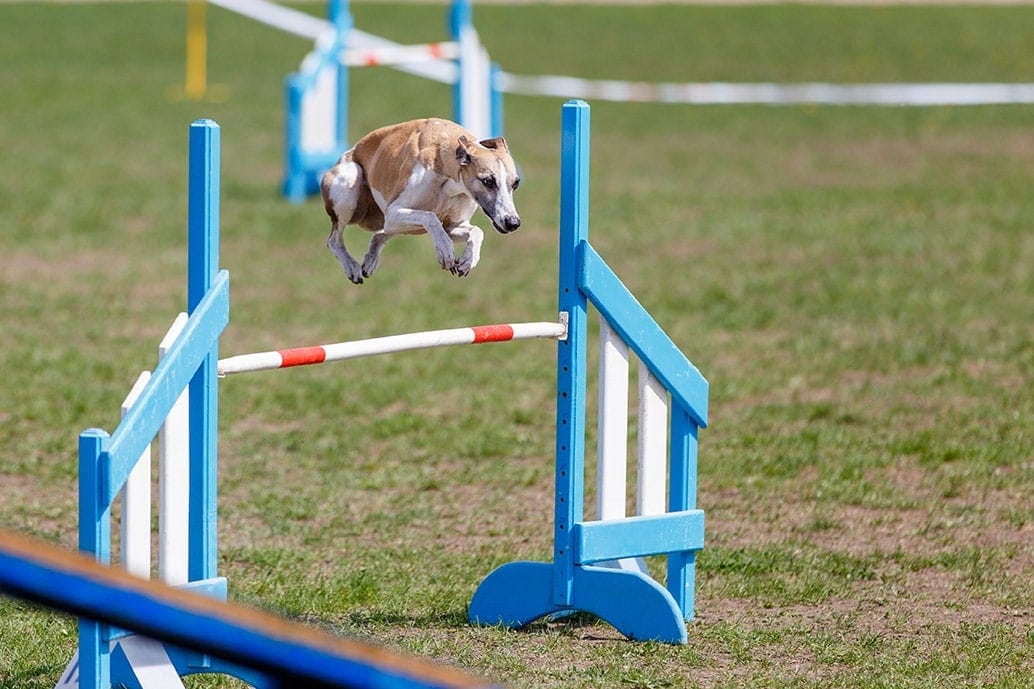
Regular Health Checkups
Like all dogs, Whippets should have regular health checkups. Ensure that they are up to date on their vaccinations, and schedule regular vet visits for dental checkups, heartworm testing, and general wellness exams.
Socialize Your Whippet
Socialization is crucial for your Whippet’s emotional well-being. Introduce them to various environments, people, and animals to help them become well-rounded dogs. This not only helps them adapt to different scenarios but also plays a crucial role in reducing behavioral issues.
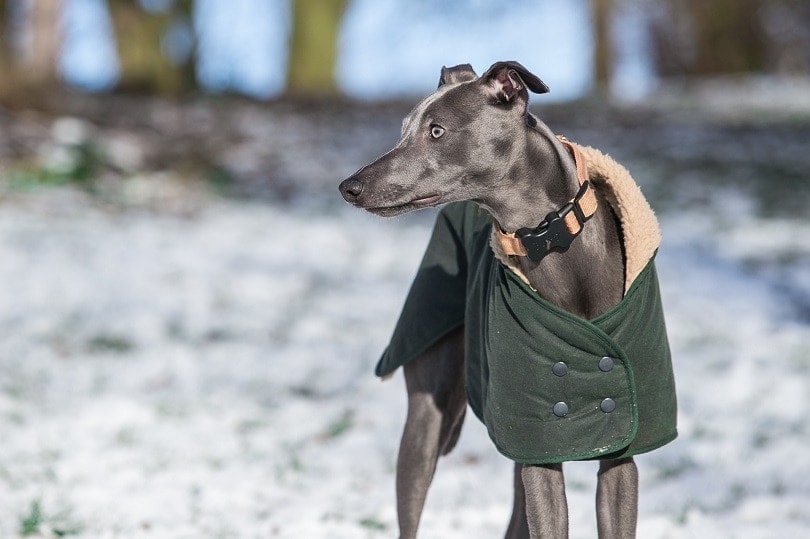
Offer Plenty of Love and Affection
Last but definitely not least, shower your Whippet with lots of love and affection. Whippets are known to be sensitive dogs that form strong bonds with their human families. Regular cuddles, kind words, and the assurance that they are part of a loving family can go a long way in keeping your Whippet happy.
Ensuring your Whippet’s happiness and health is a continual process that goes beyond just feeding and walking them. It involves understanding their needs, providing for them, and nurturing a relationship that is based on mutual love, respect, and trust.
Doing so will not only make your training sessions more effective but also make the journey of raising a Whippet an extremely rewarding one.
Final Thoughts
Training a Whippet can be a rewarding experience, albeit a little challenging. But with the right approach, you’ll have a well-trained Whippet in no time. Remember, every dog learns at their own pace, so be patient and celebrate each small victory.
Featured Image Credit: encierro, Shutterstock


